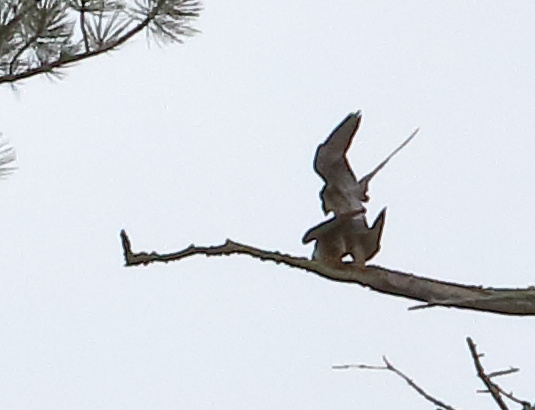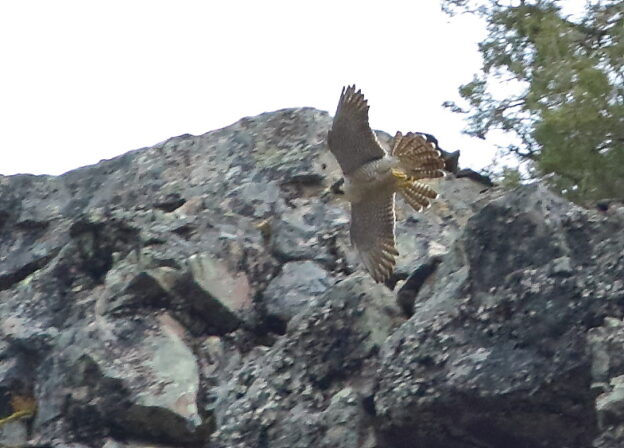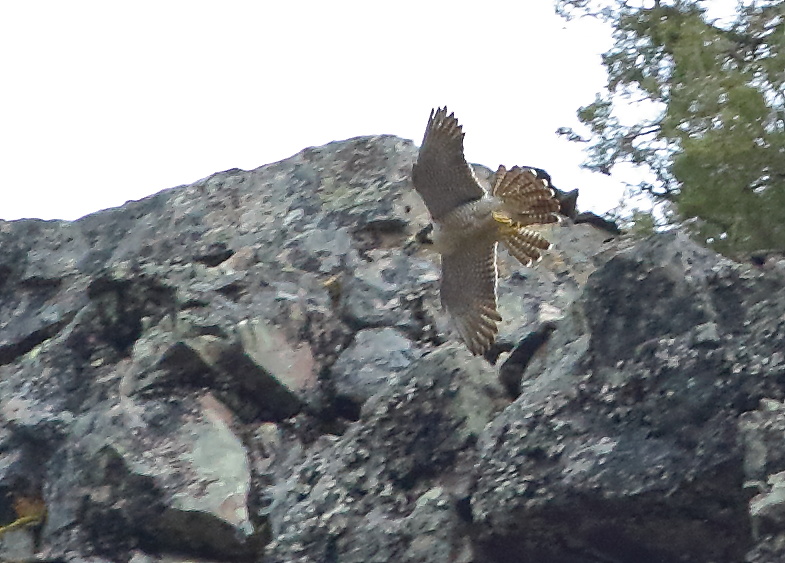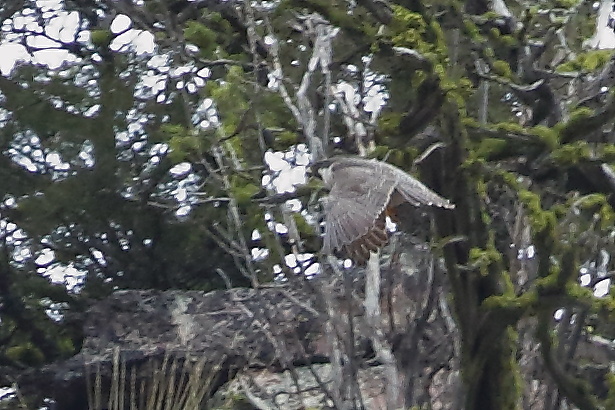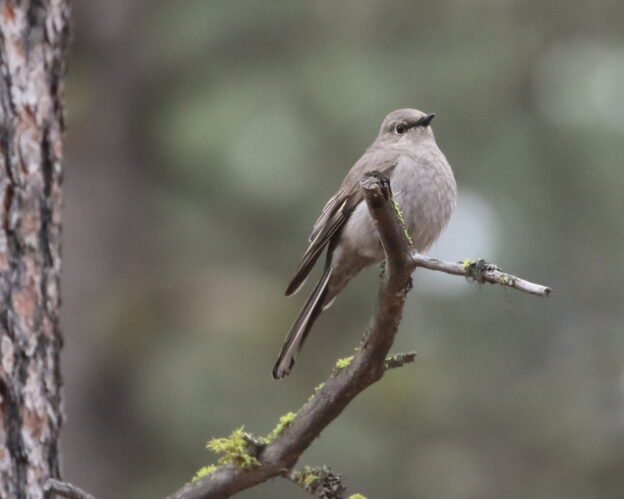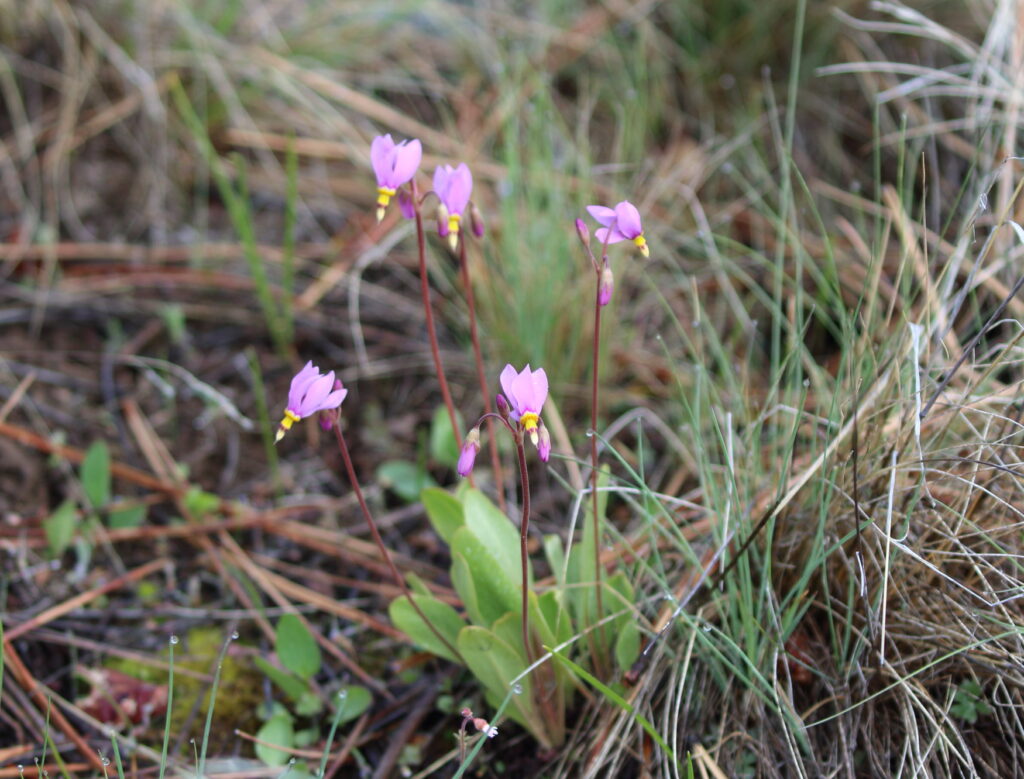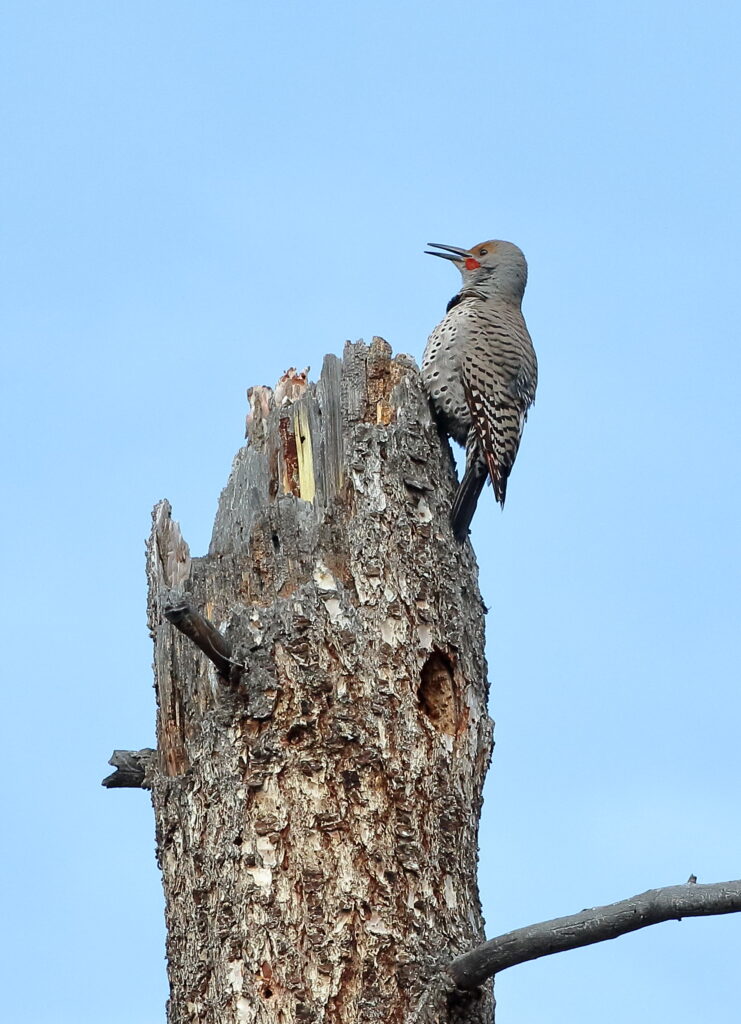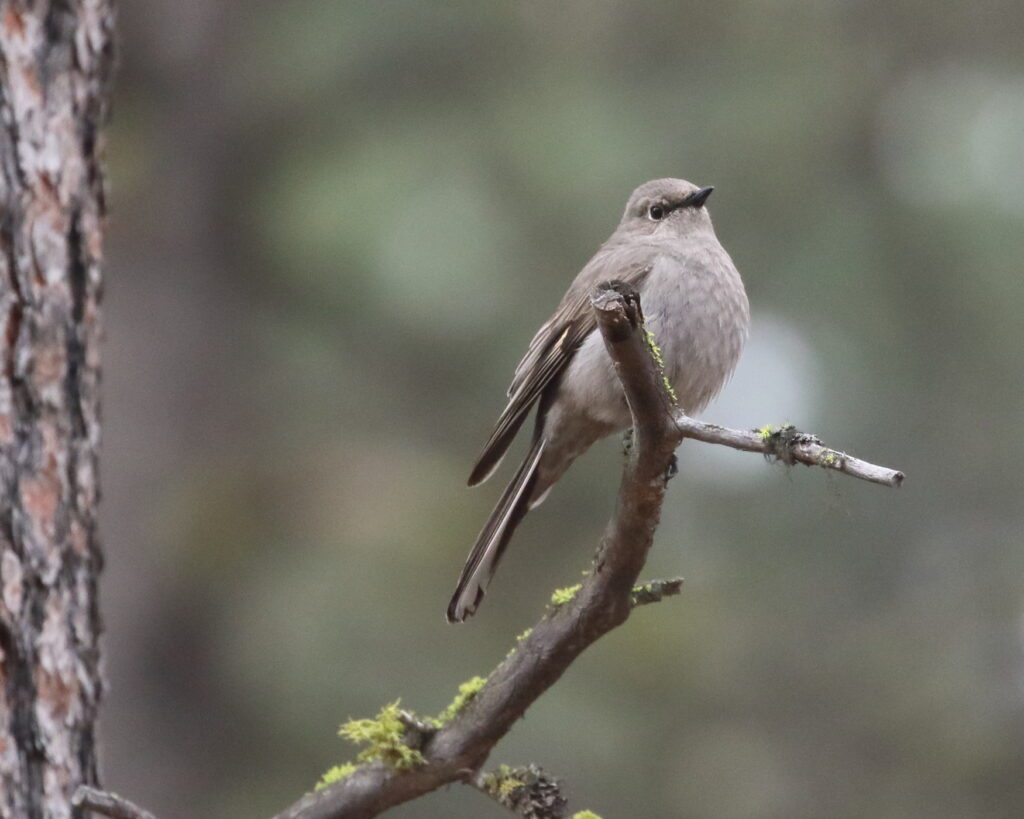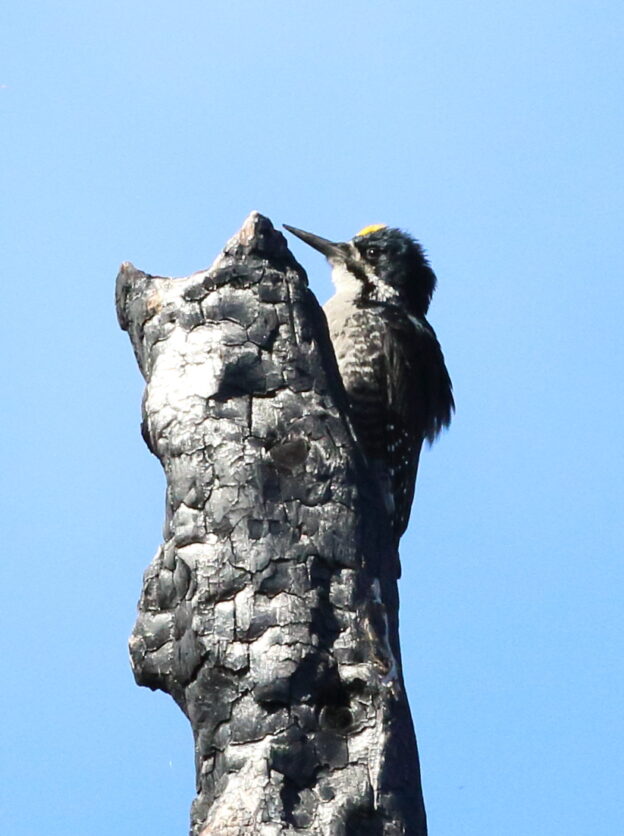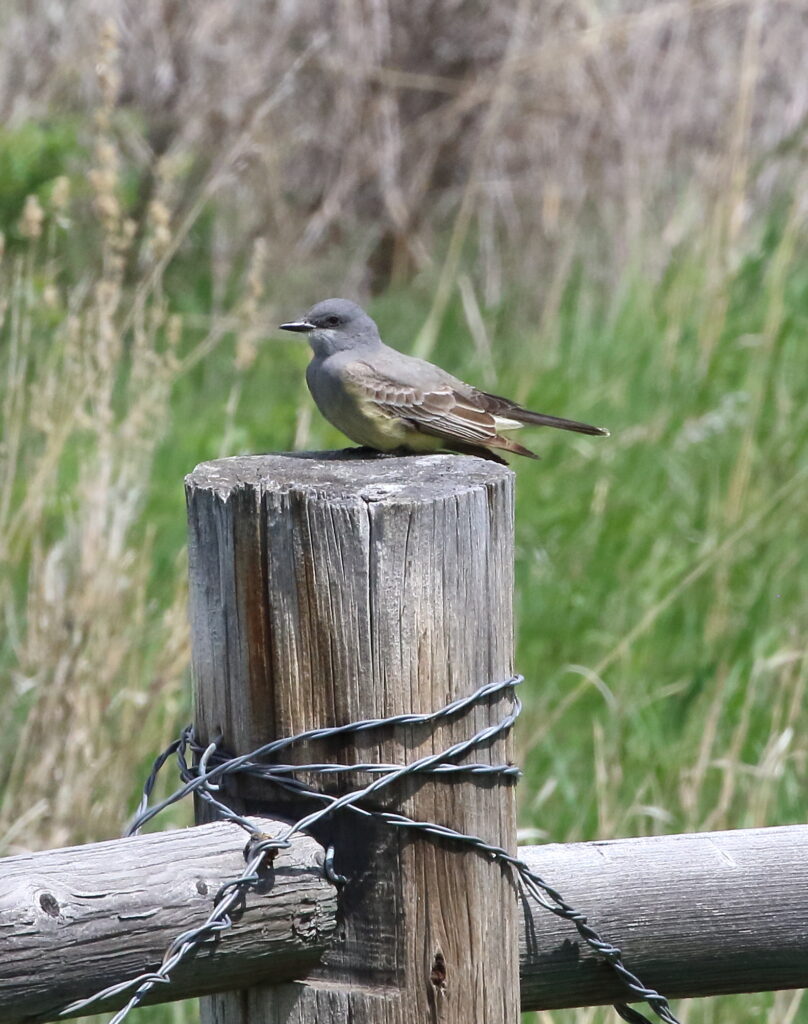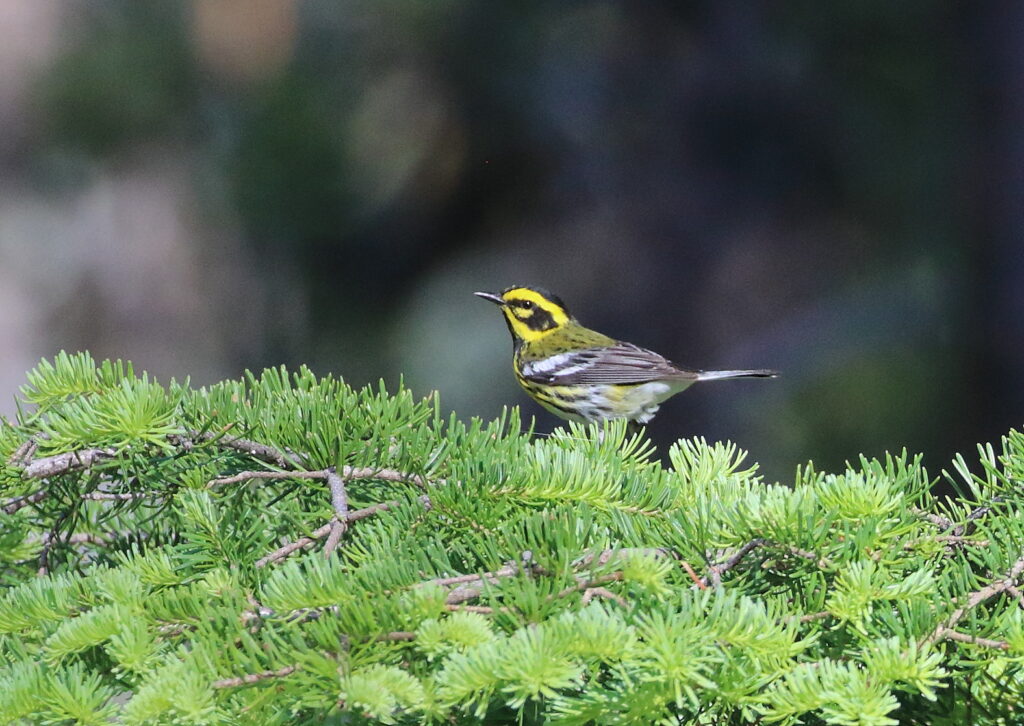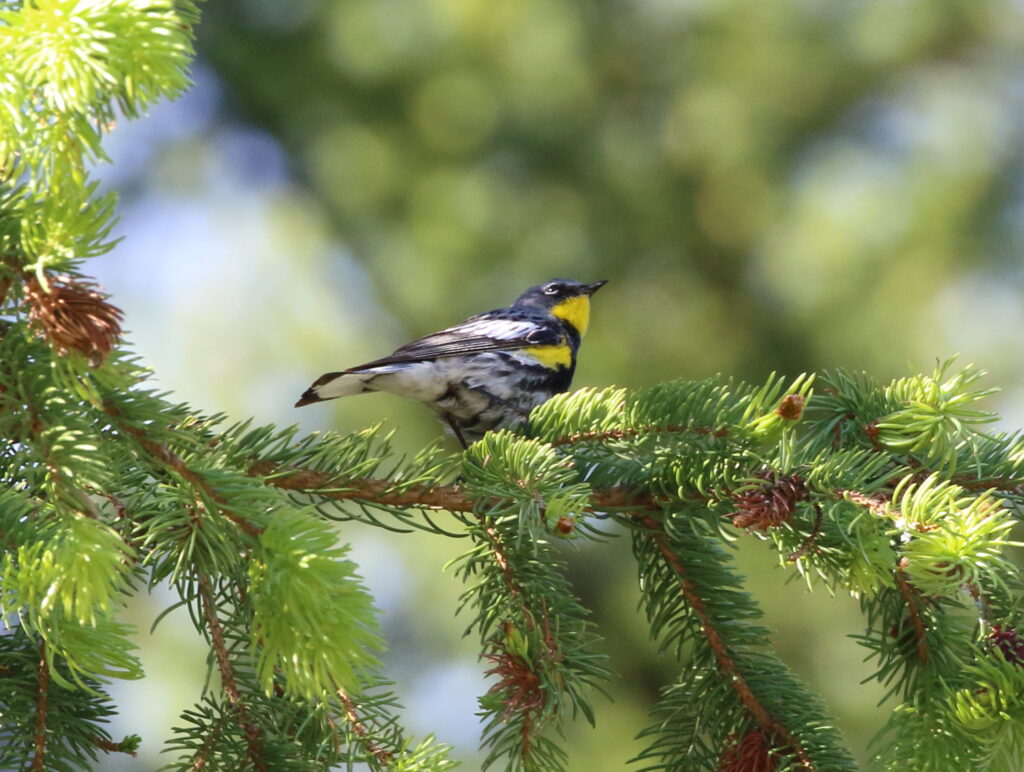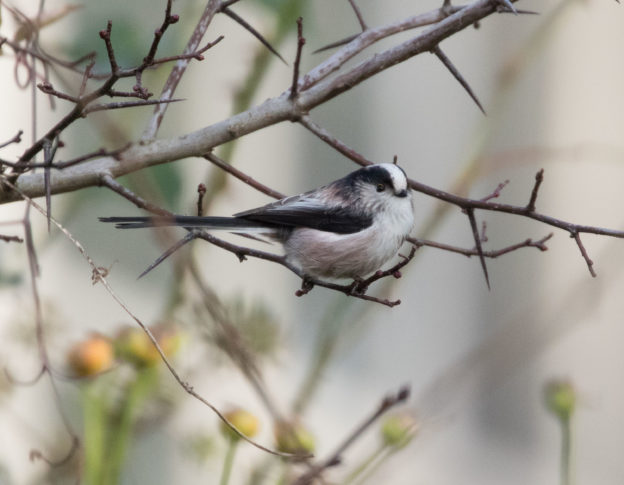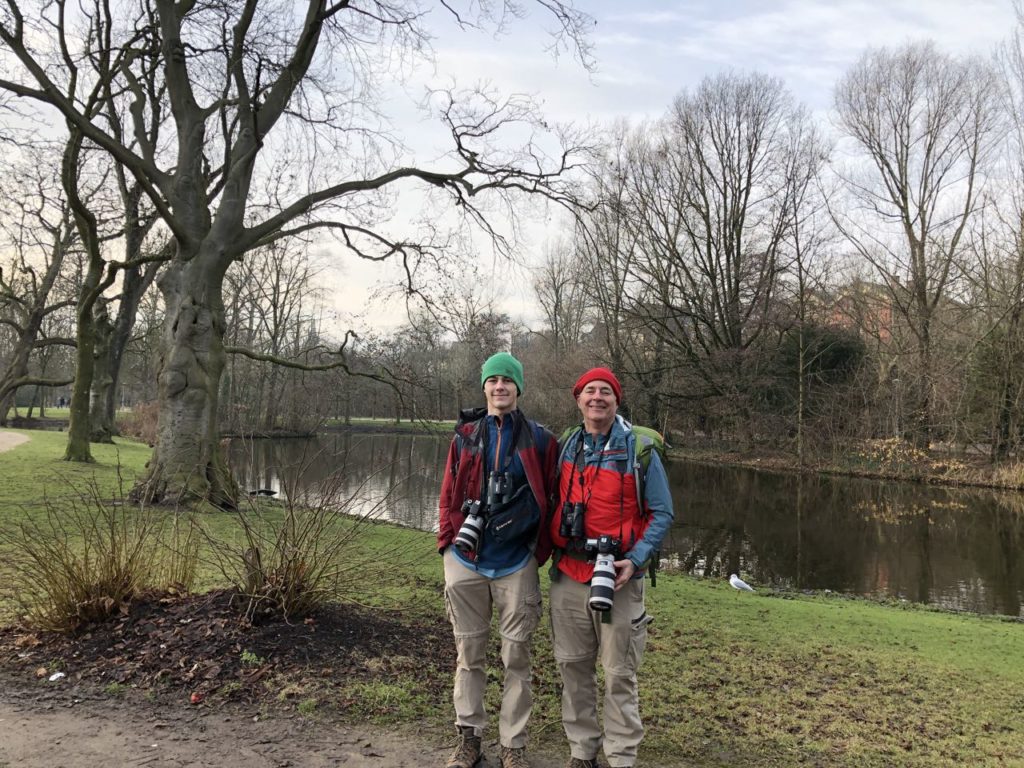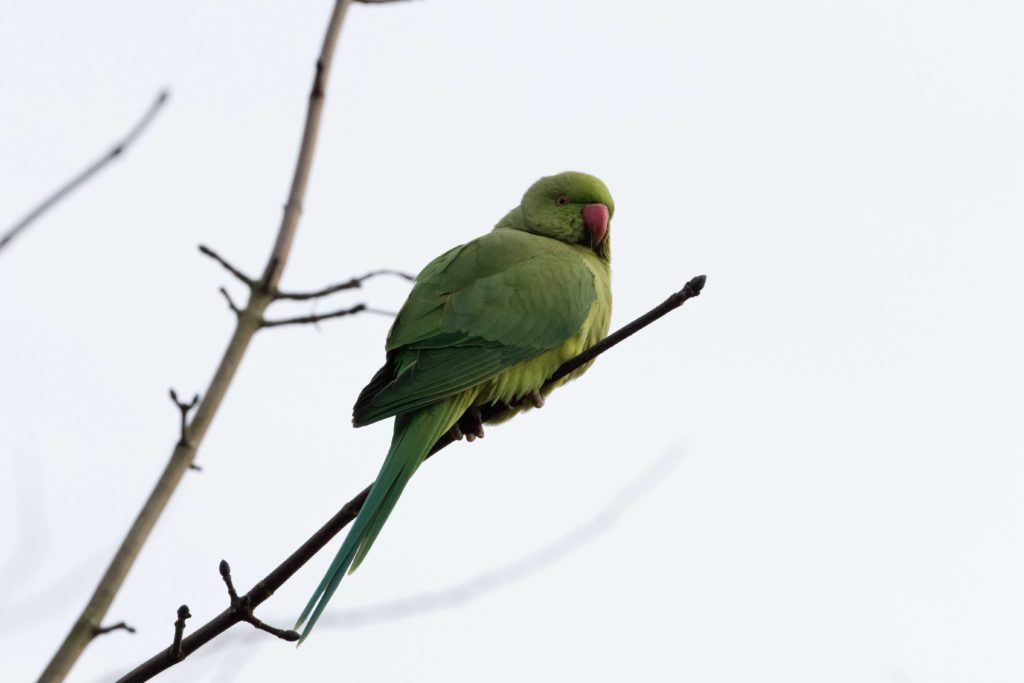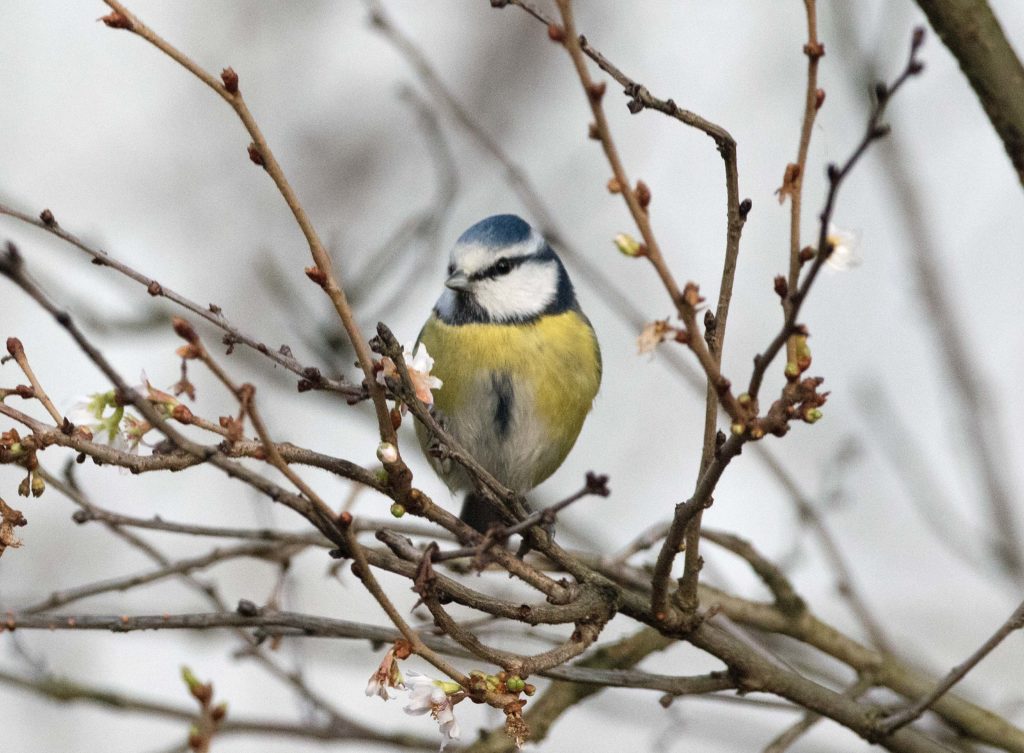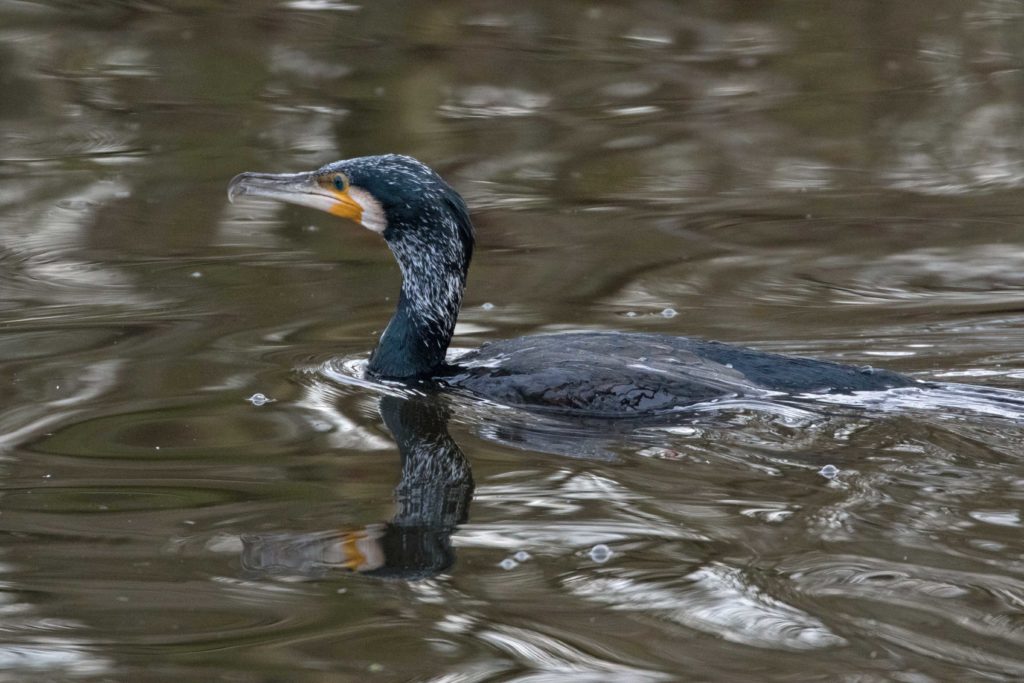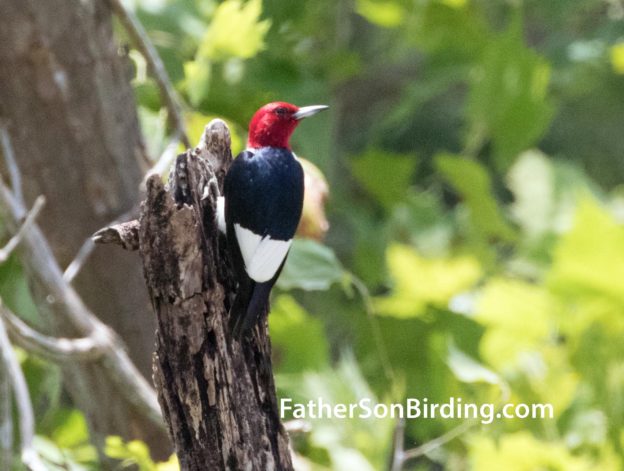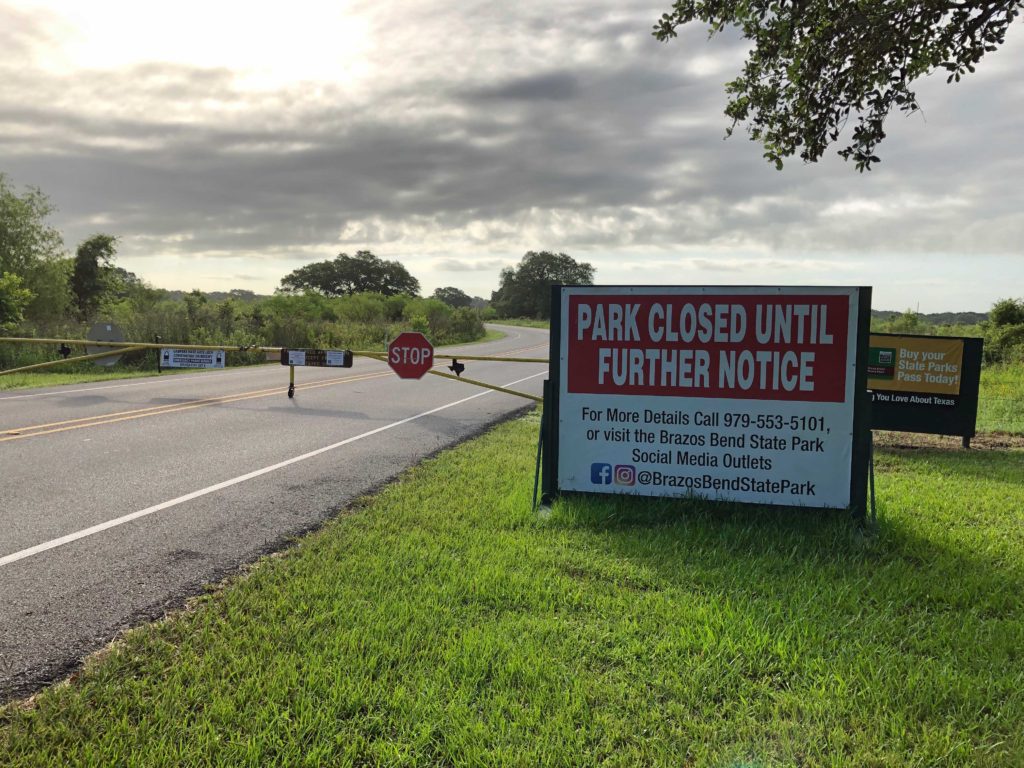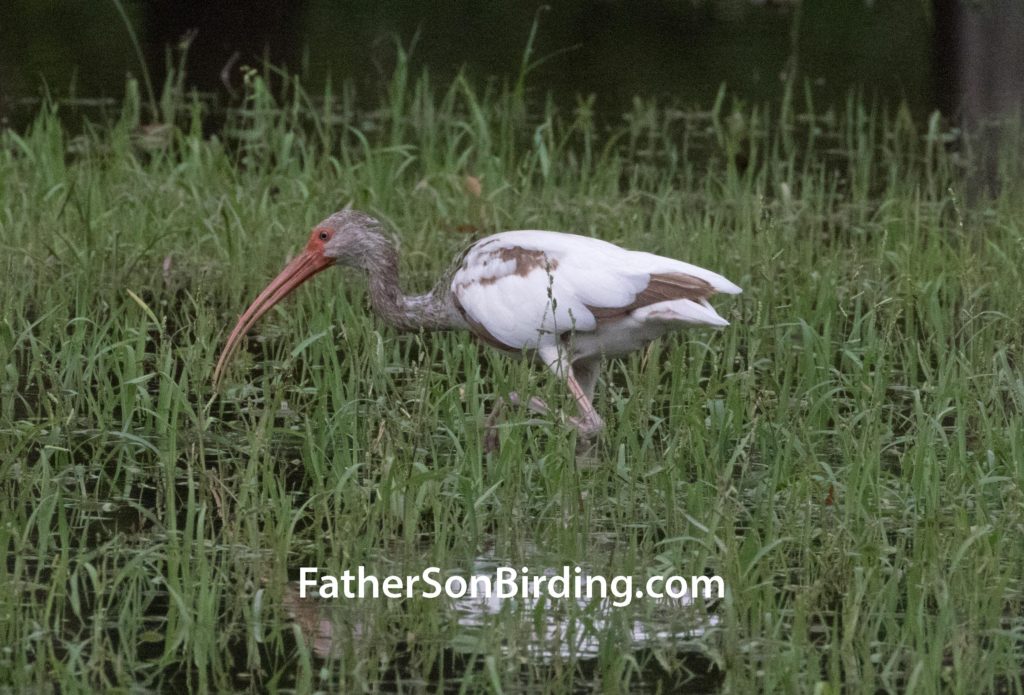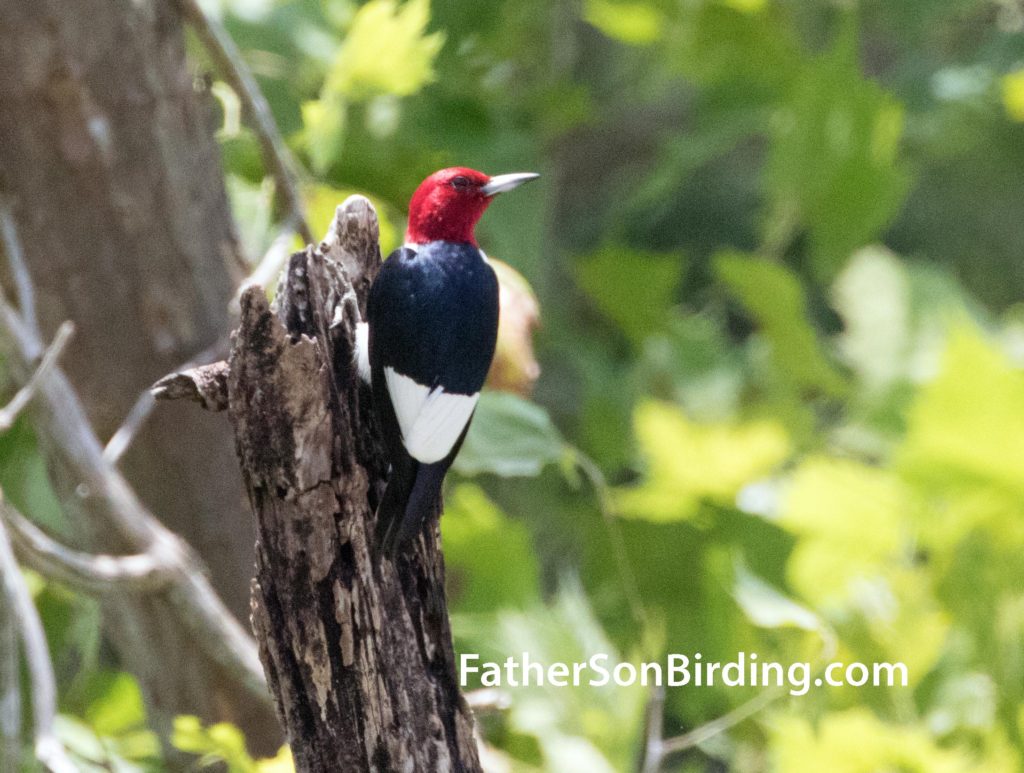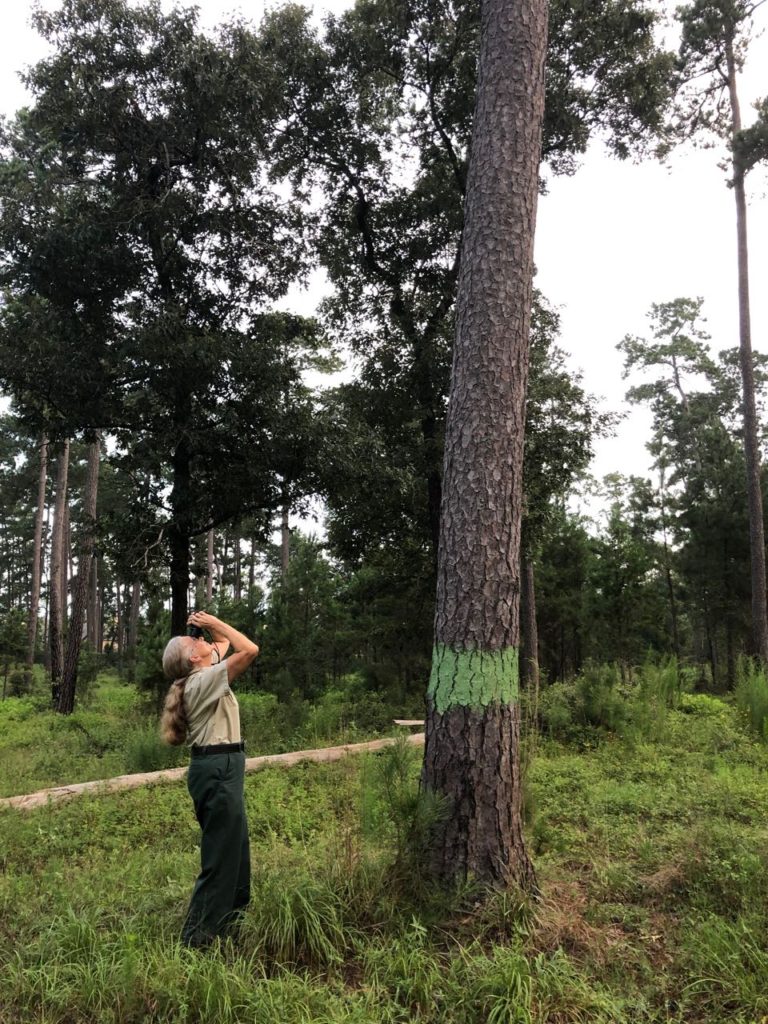Ever wanted to visit the Amazon—the rainforest, not the store? Check out Sneed’s new travel article at Perceptive Travel online magazine!
So after getting home from my Blue Mountain hike on Monday, I began planning Tuesday’s birding therapy outing to the Missoula Cemetery, a place I have monitored since the pandemic began last year. Almost immediately, however, I received a message from a friend of a friend (FOAF) about a putative Peregrine Falcon pair a few miles from our house. Peregrines are not uncommon in Montana with well over a hundred nesting pairs—a remarkable resurgence considering the DDT disaster that devastated dozens of bird species through the 1960s and 70s. However this possible nest site was one that neither Braden nor I had heard of, so instead of hitting the cemetery Tuesday morning, I convinced Braden to skip first period and go check it out by bike.
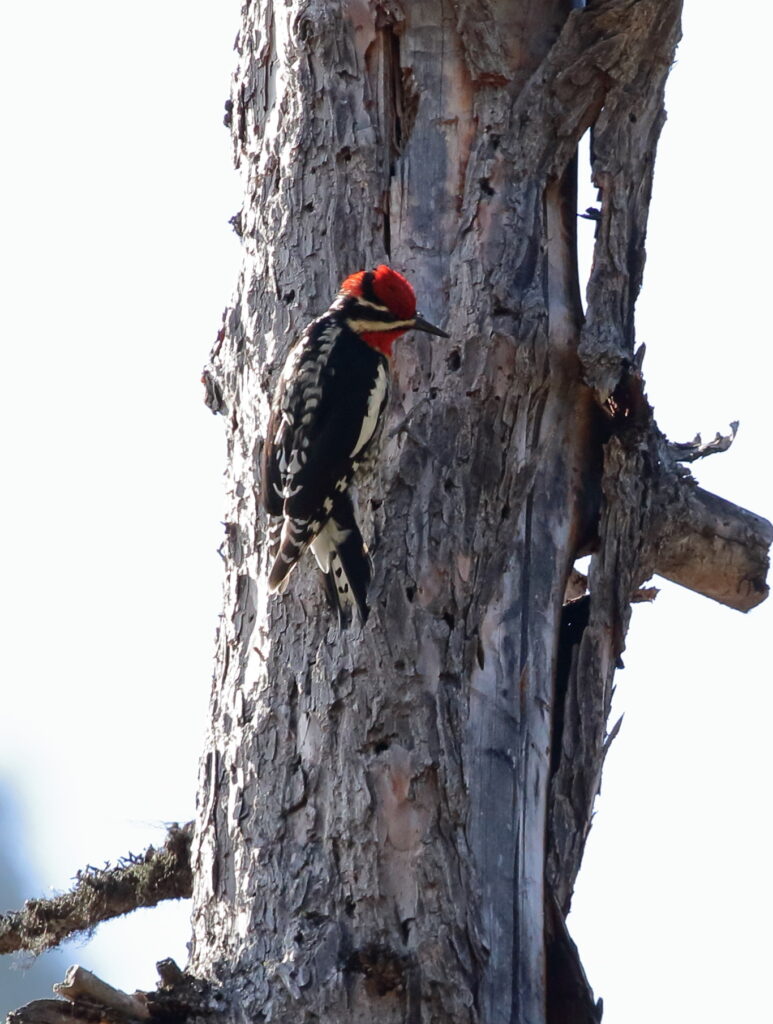
It was a perfect morning for a bike ride and we spotted or heard Black-capped and Mountain Chickadees, Red-breasted Nuthatches, and an assortment of other birds—Braden more than I thanks to his Bionic Ears of Youth! We were especially excited to find a nice boggy area with a couple of Red-naped Sapsuckers drumming on snags. Finally, we reached the area the FOAF had described and almost immediately thought that we heard the peregrines calling. We set up “camp” and watched, hoping to catch sight of them. No luck. Even worse, Braden had to leave to get back to school. “Well crap,” I thought. I didn’t want to see them without him, but also knew I might not head back to the spot anytime soon so decided to stay longer.
I pulled out my phone to play a peregrine recording—not to attract them but to make sure what they sounded like. WHAM! Almost instantaneously a loud answering call hit me from above and I looked up to see the unmistakable shape of a falcon flying against the gray skies. That turned out to be just the opening salvo in an amazing twenty-minute aerial exhibition that the peregrine and his mate put on for me. I watched them chase off another raptor, skim forest treetops, and in a grand finale, copulate on the branch of a tree! Granted, the birds were far away, but I can’t recall a more exciting raptor experience—well, at least since seeing the Gyrfalcon with Braden earlier this year.
I got in touch with the Montana Peregrine Institute to see if they knew about this particular nest and it turns out that the pair was first discovered in 2020 and had apparently successfully fledged three young! My FOAF went even further and single-handedly convinced the Forest Service to delay a controlled burn that was supposed to happen this last week—right in the peregrines’ territory! Hopefully, the burn will go ahead in the fall—and give the birds a wonderful larder of new prey to raise their next batch of chicks.
